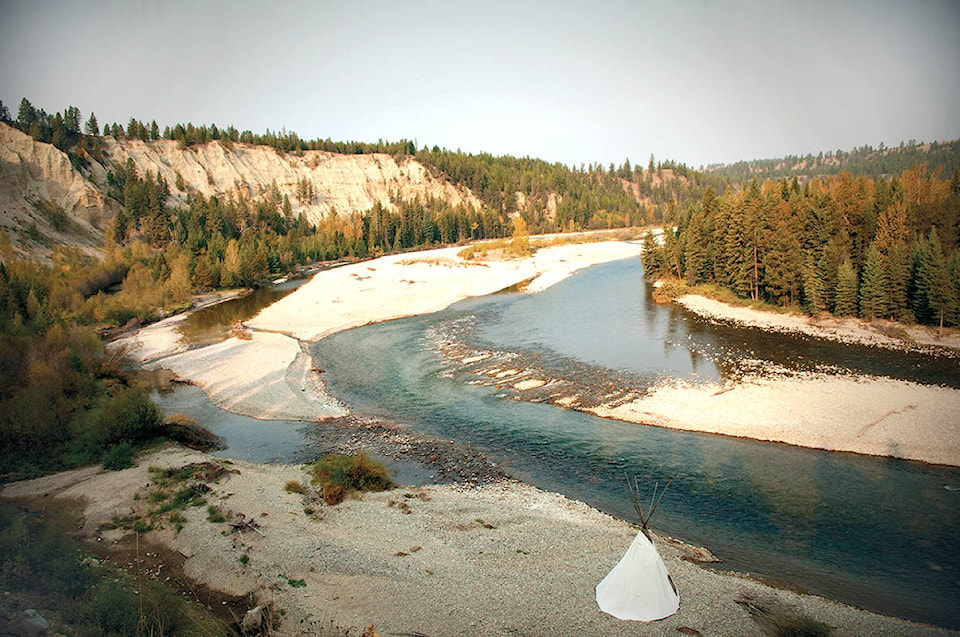The ʔaq̓am leadership is confirming that 182 unmarked graves were discovered in a cemetery site close to a former residential school near Cranbrook.
The graves were found using ground-penetrating radar last year, following the discovery of an unknown and unmarked grave during remedial work at the cemetery, according to a statement from the ʔaq̓am. That discovery prompted the community — in consultation with elders and knowledge-keepers — to use ground-penetrating radar to further explore the grounds,
“This was a deeply disturbing and painful experience for our Elders and community as a whole. Ktunaxa cultural protocols were strictly followed by ʔaq̓am community members who participated in the process as well as the contractor who operated the ground penetrating radar system,” reads the statement.
The statement from ʔaq̓am was issued shortly after a news release from the Lower Kootenay Band, a member nation, which initially announced the news of the 182 unmarked burials at ʔaq̓am.
The investigation found 182 unmarked graves, some of which were only three or four feet deep.
According to the ʔaq̓am leadership, the area undergoing analysis has a complex history. The cemetery was established around 1865 for settlers to the region, and the St. Eugene Hospital was built near the St. Mary River nearly a decade later.
Many of the graves in the cemetery are those who passed away in the hospital from within the Cranbrook region during that time frame, according to the ʔaq̓am.
The St. Eugene hospital burned down in 1899 and was rebuilt in Cranbrook, but the community of ʔaq̓am did not start to bury their ancestors in the cemetery until late 1800s.
The St. Eugene Residential School, adjacent to the cemetery site, operated from 1912-1970 and was attended by hundreds of Ktunaxa children, as well as children from neighbouring First Nations and communities.
Graves were traditionally marked with wooden crosses and this practice continues to this day in many Indigenous communities across Canada. However, wooden crosses can deteriorate over time due to erosion or fire, which can result in an unmarked grave.
Those factors, including others, make it difficult to establish whether or not these unmarked graves contain the remains of children who attended the St. Eugene Residential School, according to the ʔaq̓am statement.
“The community of ʔaq̓am remains steadfast in its responsibility as caretakers of the ʔaq̓am cemetery and to those who eternally rest within,” reads the statement. “Further ground-penetrating radar work will be done on the site and ʔaq̓am is committed to working with external parties to identify as many graves possible and to memorialize all unknown graves with stone markers to ensure that no soul is truly forgotten.”
However, ʔaq̓am leadership notes that the issue of the remains of children victimized in residential schools and buried in unmarked graves is of great concern.
The St. Eugene’s Mission School was part of the residential school system mandated by the Government of Canada. It operated from 1912 until the early 1970s by the Roman Catholic Church. For years, it was an abandoned building before it was transformed into a hotel and resort operated by a company representing five Ktunaxa member communities.
The ʔaq̓am community is urging other co-owners of the St. Eugene Resort, Ɂakisq̓nuk First Nation, Yaqan Nuʔkiy (Lower Kootenay), yaq̓it ʔa·knuq̓ⱡiʔit (Tobacco Plains) and the Shuswap Indian Band to work with ʔaq̓am leadership and community members to ensure that vital work is undertaken.
ʔaq̓am Leadership respectfully requests the public’s patience and understanding during this difficult time.
The National Indian Residential School Crisis Line is a 24-hour phone line available to provide support for residential school survivors and can be reached at 1-866-925-4419. In B.C., the KUU-US Crisis Line provides First Nations and Indigenous specific support and can be reached at 1-800-588-8717.
Taxa
READ MORE: Aq’am asks for privacy in days ahead, as further work is conducted after ground-penetrating radar
